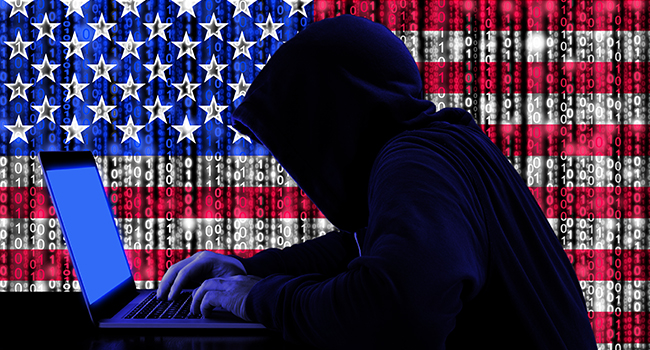
Mostly Ignored Cybersecurity Collaboration is Becoming a Reality
- By Robert R. Ackerman Jr.
- Feb 08, 2022
Times have started changing for the better in the U.S. cybersecurity world. After years of minimal effort to get together to discuss cyberattacks and breaches and share some pertinent data, big companies and the federal government have finally started to collaborate on mitigating big cybersecurity issues.
This is a meaningful development in the mostly isolated arena of cybersecurity professionals -- one in which pros have long communicated only with colleagues and outsiders seldom intervened. But the recent start of serious collaboration is likely to strengthen collective resilience and reactions to potential threats -- and might significantly improve cybersecurity in America over time.
It’s a refreshing new concept similar to the concept of a “neighborhood watch.” In American neighborhoods, the idea is to observe and share criminal information, including the tactics and techniques of attackers, to recognize threats and better defend against them. Studies have shown that most areas associated with a neighborhood watch see crime drop.
There is no reason why a similar outcome can’t be achieved in cybersecurity. After all, a company that shares some of its cybersecurity information with outside organizations and teams is exposed to additional resources and expertise.
As an example, let’s say that an organization has recently expanded its transactional lines of business and in response faces a rapid uptick in fraud. Its anti-fraud team doesn’t yet possess the skills or manpower required to effectively combat the fraudulent schemes. By sharing information and collaborating with other organizations with better-established anti-fraud teams, this company can get more visibility into emerging schemes and guidance on how to shut them down.
For decades, companies and to a lesser extent the government have been very slow to share cybersecurity information. They were worried about legal implications, attacker retaliation, reputational damage or endangering intellectual property. But the number of cyberattacks has consistently escalated over the years despite ever-bigger cybersecurity budgets, and companies and the government have come to realize they can’t effectively fight many cyber-attacks solo. It helps, too, that important cybersecurity information can often be shared without actually revealing identities.
Big technology companies, in particular, are taking cybersecurity collaboration seriously, sparked, in part, by a meeting at The White House last summer in which CEOs in information technology and other industries made concrete promises to President Biden to take action. Google, for instance, said it would invest more than $10 billion over five years to strengthen cybersecurity and also pledged to train tens of thousands of Americans in security-related fields. IBM said it would train more than 150,000 people in cybersecurity skills in three years and also announced a new data storage solutions for critical infrastructure companies.
The groundwork for serious cooperation was probably laid in December 2020, when the devastating hack of network management company SolarWinds was divulged. An estimated 18,000 customers downloaded SolarWinds code containing malware, enabling bad actors to compromise many major companies and U.S. government agencies. It became apparent that business and government expose each other to significant cyber-risks because they are interconnected and rely on the same network of software vendors.
In addition, the cyber community finally conceded that U.S. technology infrastructure, including data centers and industrial control equipment, was mostly owned and operated by private companies acting on their own amid constantly evolving attacks. Underscoring the vulnerability of American players, ransomware breaches last year at giants Colonial Pipeline and JBS Foods undermined the availability of gasoline and food, respectively, in large swaths of the country.
The government and technology companies did make a few efforts in the past to stimulate cybersecurity collaboration, but they were unsuccessful, largely because participation was minimal.
Perhaps the most prominent step was The Cybersecurity Information Sharing Act of 2015, the first major piece of Congressional legislation. It urged businesses and government agencies to share information about cybersecurity threats to better identify cyber-attacks and defend against them. But participation was voluntary and most technology companies declined to participate for privacy reasons. The legislation ultimately failed.
That lesson learned, here are three examples of renewed progress on the cybersecurity front:
- The White House cybersecurity summit last August. Business leaders in total committed billions of dollars to strengthen cybersecurity in multiple ways. In addition to the plans cited by Google and IBM, there was also the biggest move of all by Microsoft – a $20 billion investment in cybersecurity advancements over the next five years. This included an expansion of Microsoft’s security training network and a commitment to help U.S. government agencies upgrade their digital security systems.
- The announcement in October by White House Cyber Czar Chris Inglis of a new effort to protect both the public and private sectors. One effort underway is laying the groundwork for more cyber regulations in key industry sectors, including energy and transportation. Inglis is also working to move much of the government to a “zero-trust” model – the assumption that all computer network activity is malicious until users prove otherwise.
- The National Security Agency also announced in October that more than 100 companies have joined a NSA effort to collaborate with industry on big cybersecurity problems. This includes a goal to speed the translation of intelligence about cyber threats into unclassified forms that can be more widely shared with industry. This is a huge about-face for the NSA, which for decades shunned such public efforts.